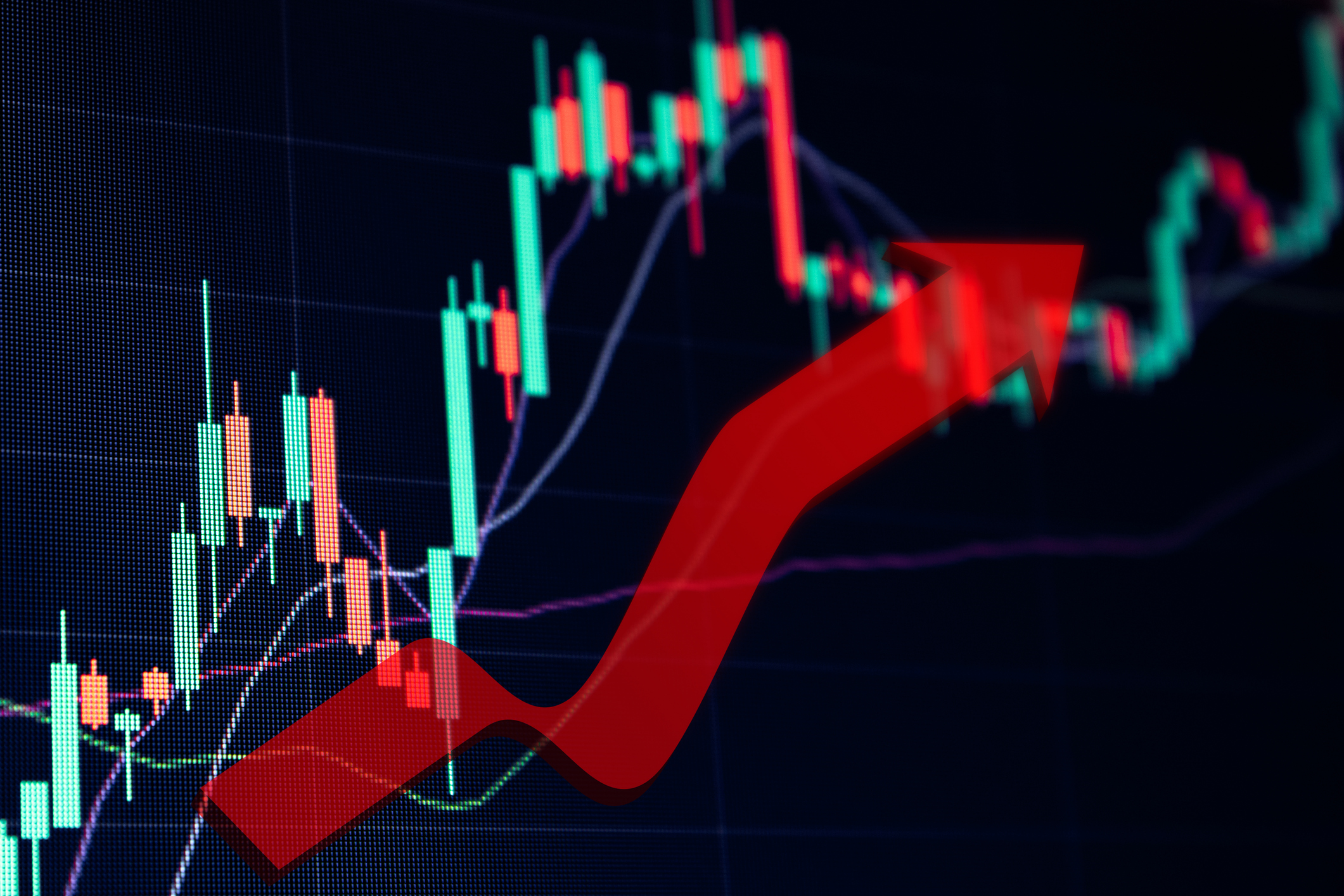3 Vanguard Funds on the Comeback Trail
Once mediocre, they’ve turned into solid performers, thanks to new managers or shifts in market sentiment.

When a good mutual fund does well, everyone takes notice. But it’s easy to overlook a formerly poor performer that has turned the corner. Take the three Vanguard funds described below. Once mediocre, they have turned things around in recent years.
For context, compare the returns of these funds with those of Standard & Poor’s 500-stock index, in parentheses below. Results are through January 29 and are annualized.
Vanguard Growth & Income Fund
Symbol: (VQNPX)

Sign up for Kiplinger’s Free E-Newsletters
Profit and prosper with the best of expert advice on investing, taxes, retirement, personal finance and more - straight to your e-mail.
Profit and prosper with the best of expert advice - straight to your e-mail.
Assets: $6.2 billion
Expense ratio: 0.34%
One-year return: -2.4% (S&P 500: -0.7%)
Three-year return: 11.4% (S&P 500: 11.3%)
Five-year return: 11.5% (S&P 500: 11.5%)
10-year return: 5.7% (S&P 500: 5.7%)
New blood has helped to revive this large-company, computer-driven stock fund. Since Vanguard replaced Mellon Capital in 2011 with three firms that rely on quantitative stock-picking practices—Vanguard’s own “quant” team, D.E. Shaw Investment Management and Los Angeles Capital—Growth & Income has returned an annualized 16.2%, outpacing the S&P 500 by an average of 0.5 percentage point per year. (For the five-year period before the shakeup, the fund lost 2.6% annualized, lagging the index by an average of 1.5 points per year.)
Each management group runs one-third of the fund’s assets. Vanguard’s team uses a five-factor model that homes in on valuation, growth and quality, among other things. Los Angeles Capital relies on some of the same screens, but it puts greater emphasis on factors that are in favor with investors and less emphasis on factors that are out of favor. Morningstar analyst Kevin McDevitt says D.E. Shaw uses models that incorporate, among other things, technical analysis (such as share-price trends and trading volume) and fundamental measures (such as the strength of a company’s balance sheet).
But, McDevitt adds, the new managers have delivered the goods during a period of mostly strong stock-market performance. “They haven’t been tested yet by difficult market conditions,” he says.
Vanguard Strategic Equity Fund
Symbol: (VSEQX)
Assets: $5.8 billion
Expense ratio: 0.21%
One-year return: -10.0%
Three-year return: 11.0%
Five-year return: 11.6%
10-year return: 5.6%
After six consecutive years of middling to below-average returns relative to its peer group, Strategic Equity has been on a roll since 2011. As a result, its five-year return ranks among the top 1% of all funds that focus on midsize-company stocks.
But its comeback is less about the fund’s investment process and more about a shift in the market that now favors the shop’s style. James Troyer, James Stetler and Michael Roach, of Vanguard’s quantitative stock group, run the fund. They use screens that focus on valuation, earnings growth and market sentiment, among other factors, to pick stocks. The computer models drive the managers toward high-quality companies that trade at bargain prices. The strategy led to Strategic Equity’s underperformance in 2007, when the fund held a number of homebuilder stocks that plummeted as the housing market weakened, eventually leading to the financial crisis.
But the managers stuck with their process, and the market began to turn in their favor. Some of the fund’s best performers over the past year included video game maker Electronic Arts (EA), footwear company Skechers USA (SKX) and software developer Manhattan Associates (MANH). The fund is “a good example of how active management styles can move in and out of favor, and that if you have a good manager it’s important to stick with them because you can recover,” says Dan Newhall, who runs the group at Vanguard that monitors its funds’ managers.
Vanguard U.S. Growth Fund
Symbol: (VWUSX)
Assets: $7.0 billion
Expense ratio: 0.47%
One-year return: 1.7%
Three-year return: 13.6%
Five-year return: 12.5%
10-year return: 6.3%
U.S. Growth was once a shining star. A $10,000 investment at the fund’s launch in 1959 would have grown to $2.5 million by the start of 2000—nearly $1.3 million more than the same amount invested in the average large-company growth fund. But the ’00s were a different story. From 2000 through 2010, shareholders in this large-company growth fund lost an annualized 5.3%. The fund lagged the average large-company growth fund by an average of 3.5 percentage points per year. Meanwhile, the S&P 500 gained an average of 0.4% a year over that period.
Things started to turn around after a manager shakeup in October 2010. Vanguard jettisoned one subadviser (Alliance Bernstein), retained one (William Blair) and signed on two new firms—Jackson Square Partners and Wellington Management. Since then, the fund has returned 14.2% annualized, outpacing the market by an average of 1.8 percentage points per year. “U.S. Growth is our biggest comeback fund because for some years it did disappoint,” says Newhall. “It was a fund that was perhaps most frustrating for us.”
Today, Jackson Square and Wellington together manage a bit more than 70% of the fund’s assets. But they share the pie with more subadvisers today than in 2010. In early 2014, Vanguard’s portfolio review group, which monitors all of the firm’s funds, folded a smaller and less- successful fund, Vanguard Growth Equity, into U.S. Growth. Growth Equity’s subadvisers, Jennison Associates and Baillie Gifford Overseas, stayed on and joined the U.S. Growth management team. Jennison and Baillie each run 6% of the fund’s assets. William Blair runs 13%; and the rest sits in cash.
Like many other large-company growth funds, this one benefited last year from a big stake in the FANGs. At last report, the fund counted Facebook (FB), Amazon.com (AMZN) and Google, now called Alphabet (GOOGL), among its top 10 holdings. All told, U.S. Growth had 27% of its assets in tech stocks.
Get Kiplinger Today newsletter — free
Profit and prosper with the best of Kiplinger's advice on investing, taxes, retirement, personal finance and much more. Delivered daily. Enter your email in the box and click Sign Me Up.

Nellie joined Kiplinger in August 2011 after a seven-year stint in Hong Kong. There, she worked for the Wall Street Journal Asia, where as lifestyle editor, she launched and edited Scene Asia, an online guide to food, wine, entertainment and the arts in Asia. Prior to that, she was an editor at Weekend Journal, the Friday lifestyle section of the Wall Street Journal Asia. Kiplinger isn't Nellie's first foray into personal finance: She has also worked at SmartMoney (rising from fact-checker to senior writer), and she was a senior editor at Money.
-
 Stock Market Today: Stocks Gain on Tech, Auto Tariff Talk
Stock Market Today: Stocks Gain on Tech, Auto Tariff TalkThe Trump administration said late Friday that it will temporarily halt tariffs on some Chinese tech imports.
By Karee Venema
-
 Sam's Club Plans Aggressive Expansion: Discover Its New Locations
Sam's Club Plans Aggressive Expansion: Discover Its New LocationsSam's Club expansion plans will open up to 15 new stores each year. Learn where they plan to open in 2025.
By Sean Jackson
-
 Stock Market Today: Stocks Gain on Tech, Auto Tariff Talk
Stock Market Today: Stocks Gain on Tech, Auto Tariff TalkThe Trump administration said late Friday that it will temporarily halt tariffs on some Chinese tech imports.
By Karee Venema
-
 Stock Market Today: Stocks Surge to Close a Volatile Week
Stock Market Today: Stocks Surge to Close a Volatile WeekIt was another day with a week's worth of both news and price action, but it ended on a strongly positive note.
By David Dittman
-
 Stock Market Today: Uncertainty Proliferates: Dow Loses 1,014 Points
Stock Market Today: Uncertainty Proliferates: Dow Loses 1,014 PointsWeaker-than-expected consumer inflation data wasn't enough to stabilize sentiment during another volatile day for financial markets.
By David Dittman
-
 Stock Market Today: Tariff Pause Triggers 3,000-Point Dow Rally
Stock Market Today: Tariff Pause Triggers 3,000-Point Dow RallyThe bond market is sending concerning signals as the Trump administration executes its rapid reordering of global trade relationships.
By David Dittman
-
 Stock Market Today: Tariff Talks Drive Another Up-and-Down Day
Stock Market Today: Tariff Talks Drive Another Up-and-Down DayTrade war negotiations are happening, but the "fear gauge" is gyrating, and investors, traders and speculators are still searching for signs of a bottom.
By David Dittman
-
 Stock Market Today: Trump Pushes Dow Into 2,600-Point Swing
Stock Market Today: Trump Pushes Dow Into 2,600-Point SwingTariffs and trade war weigh on prices across global financial markets, with little light at the end of the tunnel.
By David Dittman
-
 Stock Market Today: Dow Drops Another 2,231 Points to Hit a Correction
Stock Market Today: Dow Drops Another 2,231 Points to Hit a CorrectionThe Nasdaq Composite, meanwhile, entered a new bear market with its latest slide.
By Karee Venema
-
 Stock Market Today: Dow Dives 1,679 Points on Trump Tariff Shock
Stock Market Today: Dow Dives 1,679 Points on Trump Tariff ShockU.S. stocks lost roughly $3.1 trillion in market cap on Thursday – the biggest one-day decline since the start of the COVID-19 pandemic in March 2020.
By Karee Venema